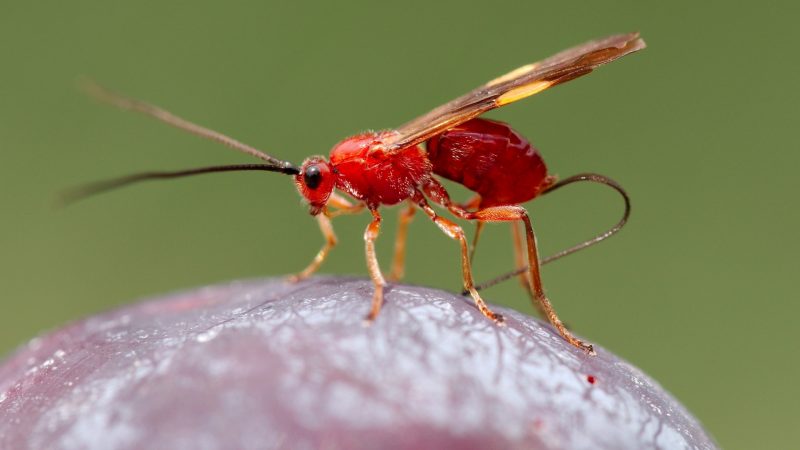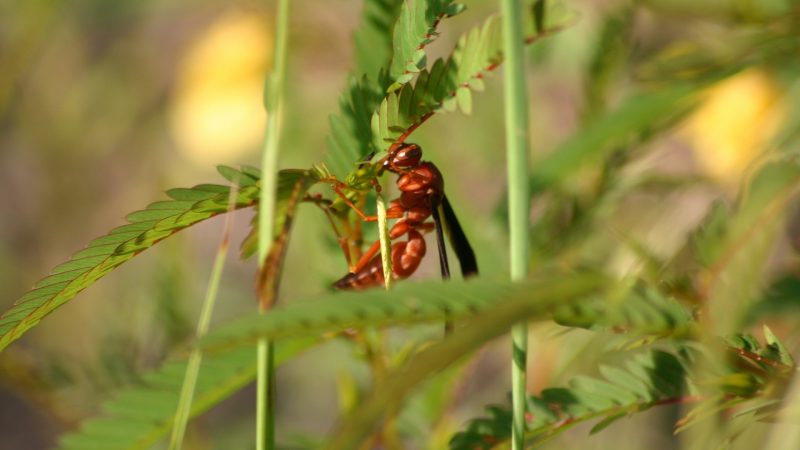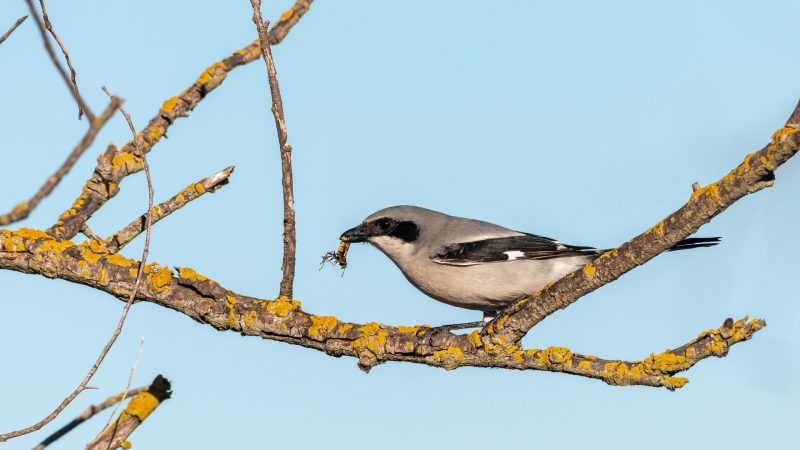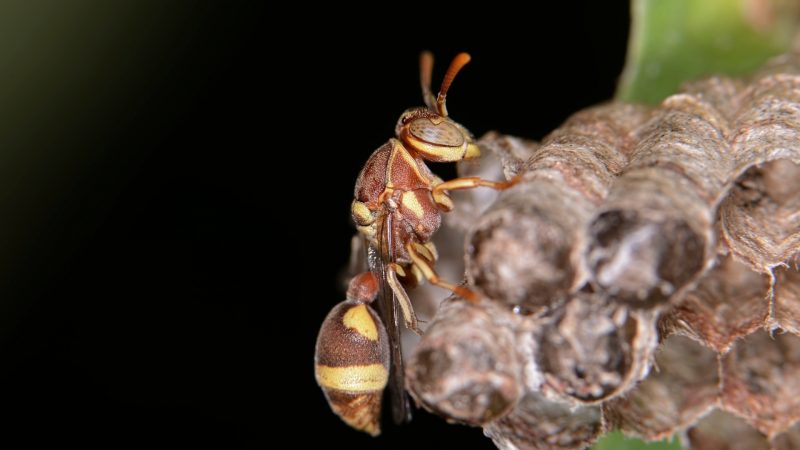Red wasps are paper wasp species commonly found in Arkansas and are the only rust-colored wasps in the eastern United States. These wasps are known to be aggressive and can give painful stings.
So, how dangerous are red wasps? Red wasps are typically not aggressive unless they feel threatened. Their sting may cause itching mixed with a painful sting that can last for several days. However, it can cause anaphylaxis in those who are severely allergic to wasp stings.
Wasp stings are particularly common during the summer season when people spend more time outside their homes. If you want to know more about what red wasps and what they’re attracted to, keep on reading our guide to find out.
What Is a Red Wasp and What Are They Attracted To?

Red wasps are red-bodied insects with wings that are blackish-purple in color. Like most wasp species, they’re attracted to leftover food items but also prey on other insects. They’re also attracted to sweet foods, so if you’ve left some sweet treats outdoors, they’ll dive into it whenever they get a chance.
In addition, they’re also drawn to flowers and other bright things, such as bright-colored shirts or dresses that have floral prints on them. Thus, it’s best to avoid wearing bright colors in the garden or anything that has floral prints in them. Moreover,
What Purpose Does Red Wasps Serve?
Red wasps are ecologically valuable because they help in pollinating flowers and food crops. Furthermore, they also aid in regulating crop pests populations like whiteflies and caterpillars, helping in securing food globally.
What Do Red Wasps Eat?

The red wasp’s diet ranges from nectar, fruits, honey, small insects, and plants. In addition, they also like to eat leftover foods, particularly meat. Furthermore, adult wasps serve their larvae with chopped insects they’ve killed, as well as nectar.
Related: What Do Wasps Eat? | Information & Facts
What Eats Red Wasps?

Many creatures eat wasps, and some of them are:
Birds
Birds do hunt wasps, but only the solitary ones. Social wasps are known to alert their co-wasps whenever they’re in danger and attack first before their predator does. They mainly target solitary wasps to prevent getting mobbed by their target instead.
The following are the birds known to feed on wasps:
- Mockingbirds
- Starlings
- Nighthawks
- Sparrows
Invertebrates and Other Insects
Invertebrates, such as dragonflies, are eaters of smaller insects like wasps and attack them in mid-air. Some of the invertebrates and insects that are known to eat wasps are:
- Dragonflies
- Spiders
- Praying mantis
- Centipedes
- Robber flies
Amphibians and Reptiles
Reptiles, particularly geckos, are known predators of wasps. They’ve been feeding on adult wasps, as well as their larvae. In addition, the given list below also consume wasps and go through their nest for the larvae:
- Lizards
- Toads
- Salamanders
- Frogs
Mammals
Mammals, such as black bears, are known as destroyers of whole red wasps colonies, including their eggs and larvae. Although they’re known for their consumption of honey, they’re omnivores and need to get nutrients from other animals.
Furthermore, other mammals such as the following also consume adult wasps, along with their eggs and larvae:
- Badgers
- Weasels
- Mice
- Stoats
Do Red Wasps Sting?
Red wasps do sting, and their stings are painful. However, they only do this when they feel threatened or provoked. It’s also best to know that only the female red wasps can sting. Males, on the other hand, don’t have the stinging ability of females.
How to Treat a Red Wasp Sting?
To treat mild to moderate red wasp sting:
- Step 1: Clean the area of the sting with water and soap.
- Step 2: Apply an ice pack to the site to lessen the pain and swelling.
- Step 3: Always make sure to keep your wound clean and dry to avoid infection.
- Step 4: Cover the wound with a bandage if needed.
Related: What to Do With a Wasp Sting? | All You Need to Know!
Do Red Wasps Die After Stinging?
Wasps don’t die after stinging once, like bees. Their stinger can be used multiple times, which means they can pose threats to their intended prey more than once.
Can a Red Wasp Sting Kill You?
The red wasp sting can potentially be lethal only if you’re allergic to wasps stings. If someone is highly allergic to the sting of these wasps, then one sting is enough to cause death due to an anaphylactic reaction.
However, if you’re not allergic to their sting, you’ll only suffer from itchiness and pain from their sting for several days. You’ll also experience swelling and redness of the skin around the sting area.
Are Red Wasps Aggressive?
Red wasps are only aggressive when they feel threatened or provoked. Moreover, they can also get quite hostile if their nest is near your porch since they’re quite territorial.
How to Find and Get Rid of Red Wasp Nest?

To find the red wasp nest and get rid of it effectively, you’ll need to identify it first. Wasp nests differ, depending on the species they belong to. For example, social wasps specifically build their nest above the ground. Meanwhile, solitary wasps choose to nest below the ground.
Social wasps nests tend to have the following features:
- Round shape
- Light tan or gray in color
- Use the same hole as the entrance and exit
- Possess combs within their nests
- Composed of paper-like material or mud
On the other hand, the solitary wasps’ nests are indescribable since only the opening they use to come in and out in the ground can be seen and nothing more.
Below the ground nests can be found in the following places:
- Beneath the rocks
- Under fallen logs or branches
- Underneath patios or driveways
Meanwhile, above the ground nests are typically found in the following places:
- Building/House crack or crevice
- Behind screens
- Outdoor light fixtures
- Playgrounds
- Mailbox stands
- Within unused grills
Once you’ve noticed a wasp nest in your place, it’ll be best to remove it right away and treat the site to prevent them from returning. You may do the removal yourself or hire a local pest control professional to handle your wasp issue.
Related: Hornet Nest vs. Wasp Nest | Similarities, Differences, and How to Get Rid of Them
How Do You Kill Red Wasps?
If you’ve seen red wasp nests or a red-bodied insect flying around your property, you could be dealing with a wasp infestation. Once the infestation is confirmed, it’s best to treat the colony right away to prevent further risks.
Make sure to take precautionary measures by wearing the following protective gear before moving near the wasp’s nest:
- Closed-toed shoes
- Long pants
- Goggles
- Gloves
Killing red wasps can be done through the following treatment:
1. Baiting
Baiting is a good option if you don’t know the exact location of the wasp nest. To make the homemade wasp traps:
- Step 1: Get a soda can and cut its head off.
- Step 2: After that, add the meat, soda, and vinegar.
- Step 3: Place it in a way where its neck is facing towards its bottom.
- Step 4: Hang the bottle containing the bait outdoors with a rope.
2. Nest Drenching
Another option you have is nest drenching. In this method, you’ll need to use an insecticide spray, such as Spectracide , to destroy the wasp’s nest.
However, make sure that you’re wearing protective gear to ensure your safety. Also, avoid getting in contact with the insecticide spray during application at all costs.
- Insects killed: kills wasps, hornets and yellow jackets, as well...
- Up to 27 foot jet spray: stand a safe distance from the Nest...
- Eliminates the nest: wait at least 24 hours before removing...
- Powerful spray: kills insects that return to the nest over the...
- When to apply: Apply at sunset when insects are least active and...
3. Nest Dusting Using Diatomaceous Earth (DE)
Diatomaceous Earth (DE) is a popular option when it comes to killing insects. Just use this ingredient in your nest dusting activity and wait for the result. This is less risky than nest drenching, but this is only ideal if the nest is on the ground. Just sprinkle DE over the nest and encompassing area. Then, move away quickly.
- Natural Product - Composed of 2lbs of 100% ground freshwater...
- OMRI Listed - Listed with the Organic Minerals Research...
- Powder Duster Included - Powder duster in the bag for easy and...
- Supports a Great Cause - Harris donates 10% of profits to support...
- Made in the USA – Mined in Nevada and packaged in Georgia
4. Dishwash Soap Solution
Dishwash soap solution can kill wasps because soapy water gets through the wasp’s exoskeleton, which can drown them. Just mix a teaspoon of dish soap into two cups of water and spray it on the wasp. Give it at least 10 to 15 minutes before they die.
How to Kill Red Wasps in Attic?
To kill the red wasps in your attic effectively, consider doing the following steps:
Step 1: Identification
Solitary wasps can be hard to remove since they’re nesting on the ground, making them hard to locate. On the other hand, social wasps live above the ground and live in a much larger community, so you can take them down all at once.
Step 2: Preparation and Protection
Once you’re done with the identification, you can then prepare for your wasp removal job. However, make sure that you have prepared your protective gear, such as rubber gloves, rubber suit, and face protection.
Step 3: Solution Application
Finally, choose the solution. You may opt for a wasps spray or wasps bombs if you meant to kill them right away. There are now many wasp sprays that have a higher reach, which means you don’t have to go too near to the nest to affect it. You may stand several feet away but still reach the nest.
If you opt for an aerosol wasps sprayer, it would be best to consider the given steps:
- Clear the Area. Before spraying, make sure that you have removed all the objects in the attic to prevent any damage to them. Ensure that all the windows are closed for the best result. It would also be wise to put down a plastic sheet to catch the drips.
- Spray and Let It Soak. After clearing the area, spray the nest with wasp spray . Let it soak by leaving it for 24 hours.
- Keep your home clear of wasps with Ortho Home Defense Hornet &...
- This wasp spray reaches nests up to 20 feet above ground and...
- Use this wasp killer outdoors under eaves, near window frames,...
- To kill wasps, yellow jackets, mud daubers, and hornets, spray...
- Ortho Home Defense Hornet & Wasp Killer7 may also be used to...
- Remove the Nest and Clean the Area Thoroughly. After leaving it for 24 hours, get back to the attic and remove the nest. After that, make sure to clean thoroughly and dispose of the nest securely. Put it in a tightly knotted plastic bag, then into a trash bin with a secured cover.
How to Deter Red Wasps?
You can deter wasps by using the following oil:
- Spearmint
- Thyme
- Eucalyptus
- Wormwood
- Citronella
Just add a portion of your chosen oil to a part of water and mix them up in a spray bottle. After that, spray it around your home, and it’ll deter the wasps from going into your place again. Reapply as needed.
Related: How to Get Rid of Wasps in the House? | Information and Facts
List of Sources
Paulus, L., & Lucky, A. (2015). Red wasp.
University of Arkansas – Arthropod Museum. (n.d.). Red wasp.
Washington State Department of Health. (n.d.). Bees and Wasps.
- Bed Bug Surge 2025: How to Detect, Prevent, and Safely Eliminate Infestations in Top U.S. Cities - June 18, 2025
- Asian Needle Ants Invade US Homes: 2025 Guide to Identification, Risks, and Effective Control - June 11, 2025
- New World Screwworm Alert: How US Livestock Owners Can Prevent Outbreaks and Protect Herds [Summer 2025 Update] - June 8, 2025



